The Archibald Winners for 2019: Up Close and Personal
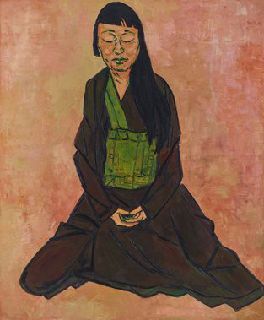
We are very fortunate in having our own personal photographer so we can view The Archibald finalists up very close. My cousin Colin Morris took his camera along to record the experience first hand when he attended a small private showing of the finalists for Australia's greatest painting competition.
A little about The Archibald for our overseas subscribers.
The Archibald Prize is by far Australia’s favourite art award and one of its most prestigious.
The Archibald Prize was the first major prize for portraiture in Australian art. It was first awarded in 1921 after the receipt of a bequest from J. F. Archibald, the editor of The Bulletin who died in 1919. It is now administered by the trustees of the Art Gallery of New South Wales and awarded for "the best portrait, preferentially of some man or woman distinguished in Art, Letters, Science or Politics, painted by an artist resident in Australia during the twelve months preceding the date fixed by the trustees for sending in the pictures." The Archibald Prize has been awarded annually since 1921 (with two exceptions) and since July 2015 the prize has been AU$100,000. (Wikipedia)
When you attend an exhibition of this nature with arguably the best artists in the land represented it can be somewhat overwhelming.
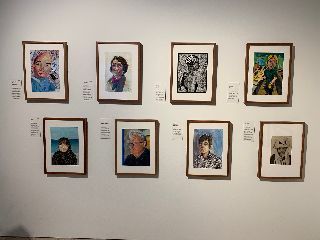
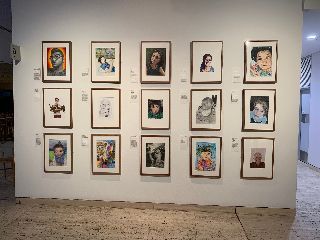
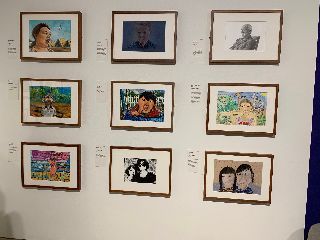
I'm not saying my cousin Colin was overwhelmed. Far from it! He was very happy taking photos of the paintings and I might add- the musicians which accompanied the event.
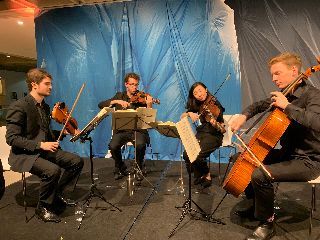
And the artist of the winning portrait standing next to his painting! An image the public seldom see.
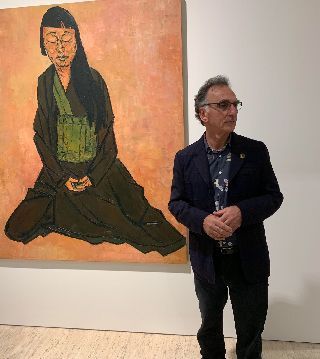
But now down to the serious stuff about looking and learning from these masterpieces of Australian art. Colin and I are only showing a selection from the 50 finalists. Please follow this link to view all the Archibald Finalist 2019.
The subject of the winning portrait is Lindy Lee a leading contemporary Australian artist and a Zen Buddhist. Her practice explores her Chinese ancestry through the philosophies of Taoism and (Zen) Buddhism. As Tony Costa explains:
...I was attracted to her wisdom, humility, courage, humour and, above all, her deep focus regarding her art practice. Costa goes on to say: I approach each painting with an empty head, beginning every portrait with charcoal drawings as I collect sensations and information. The challenge for me is to trap the energy of my sitter – the emotional feeling over and above the physical reality. In my portrait of Lindy, I have kept the colour minimal to avoid any visual noise. Ultimately the invention and the unity of the work is what matters most. (artgallery.nsw.gov.au)
The Packing Room Prize 2019 was won by Tessa MacKay with her portrait of the renowned actor David Wenham.
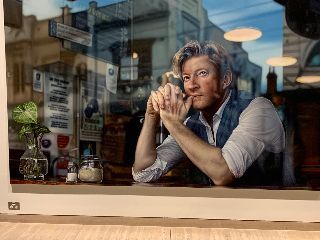
(Through the looking glass)
David delights in strolling through his Sydney neighbourhood, be it the cafe strips for coffee and a yarn with his local barista, or the park where he takes his kids. All the while, he’s happy for passers-by to approach him, demonstrating his curious, generous nature. Sydney had to be part of his portrait, but I wanted to nestle David within a figurative essence of Sydney, says MacKay. (artgallery.nsw.gov.au)
From my perspective what makes the Archibald interesting is the incredible range of styles used to portray a person. Back in the 1800s and before, portraits tended to follow the same style, the style that was popular at the time. Nowadays, a portrait perception of a person is limitless in terms of the visual interpretation created by the artists. So let's have a little look at some more of the finalists. Some artists believe that the subject's head alone will convey the spirit behind the person. To read the description for each painting please follow the links provided after the images.
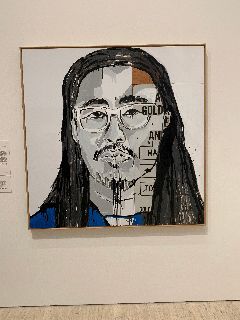
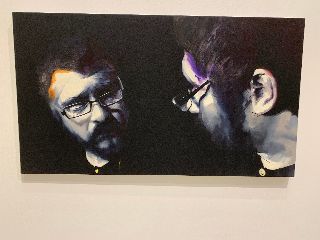
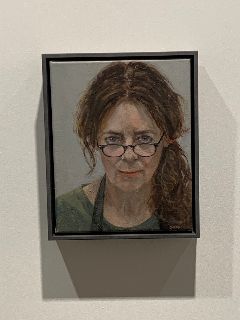
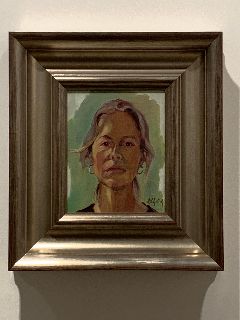
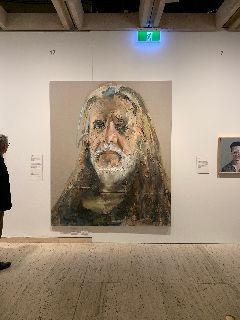
Interactive Descriptions for Paintings (Above: Left to Right, Top to Bottom)
Jasper Knight - Jason Phu
Nigel Milsom - Judo house part 8 (a perfect light)
Karyn Zamel - My self
Erika Cholich - Unadorned (self portrait)
Anh Do - Art and war
For others the shoulders have been added to the pose. Perhaps to give an air of defiance. Certainly to help define attitude. What do you think?
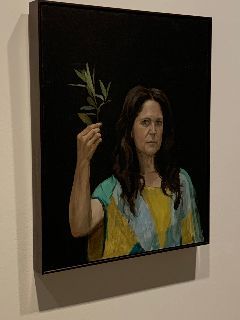
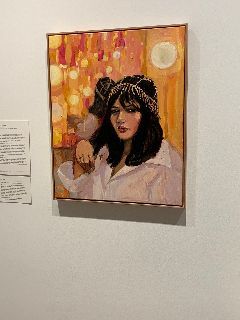
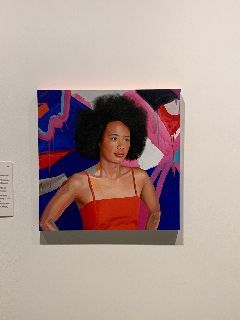
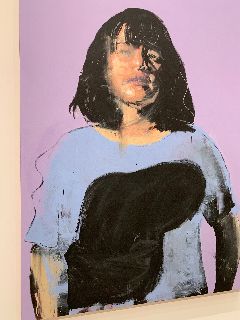
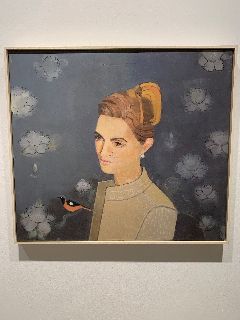

Interactive Descriptions for Paintings (Above: Left to Right, Top to Bottom)
Jordan Richardson - Annabel
Laura Jones - Nakkiah in her dressing room
Kim Leutwyler - Faustina
Benjamin Aitken - Fiona Lowry
Sinead Davies - The endocrinologist-Professor Katherine Samaras
Vincent Namatjira - Art is our weapon - portrait of Tony Albert
Some subjects are best appreciated when the full figure is shown or exposed!
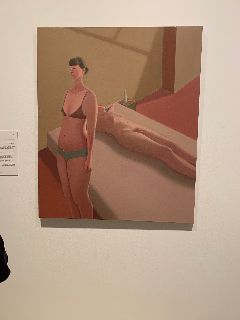
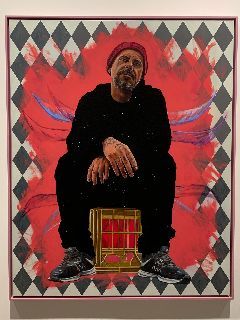
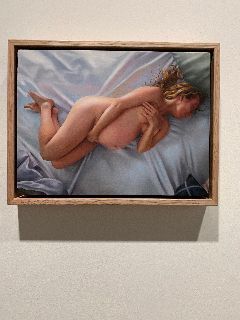
Interactive Descriptions for Paintings (Above: Left to Right, Top to Bottom)
Prudence Flint - The stand
Adam Norton - David Griggs, outta space
Katherine Edney - Self-portrait with Ariel
And yet some subjects demand that they are accompanied by significant other creatures including babies and dogs.
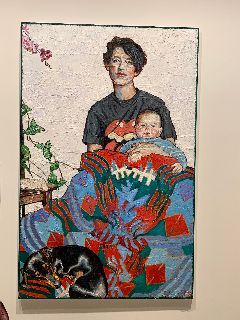
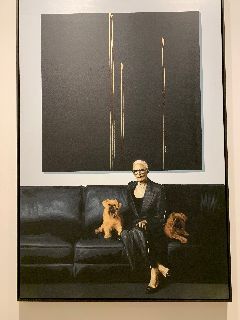
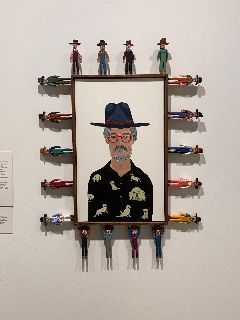
Interactive Descriptions for Paintings (Above: Left to Right, Top to Bottom)
Loribelle Spirovski - Meg and Amos (and Art)
Luke Cornish - Cato, Callie and Comet
Marc Etherington - Idris Murphy and his dog Wally
All humans are special and I love seeing some of the more remarkable ones represented in the Archibald Prize each year. Here are three great Australians represented by this year's Archibald finalists. Please use the links to read what makes them so special.
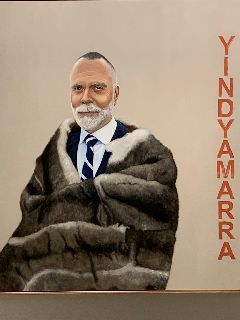
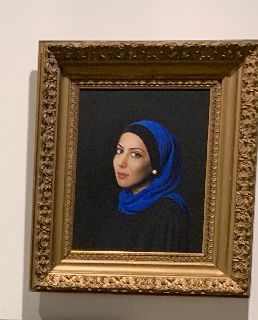
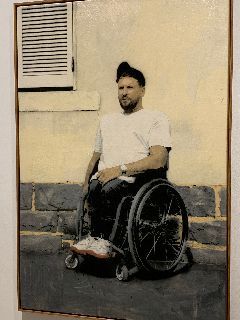
Interactive Descriptions for Paintings (Above: Left to Right, Top to Bottom)
Kate Gradwell - Yindyamarra: a portrait of Professor Michael McDaniel
Angus McDonald - Mariam Veiszadeh
Kirpy - Dylan
And I have chosen to conclude with my favourite portrait from this year's Archibald finalists. It has been created by David Griggs using a far less conventional portrait style. The portrait is titled: Tracing the antiquity of Jewish alchemy with Alexie Glass-Kantor and as David explains: Amongst the backdrop of an art industry that can be riddled with drama, negativity and bitterness, someone will come along with care and compassion for artists. Alexie Glass-Kantor is such a person. (artgallery.nsw.gov.au)
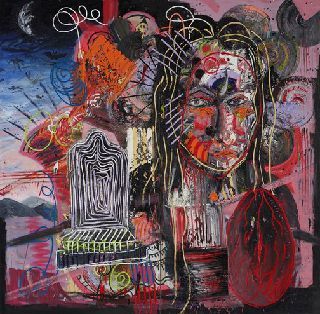
I think David Griggs' style is defined as neo-expressionism but will gladly be corrected.
A little about Alexie Glass-Kantor who is the Executive Director of Artspace (Sydney).
To establish and build a successful career in the contemporary art world, artists and arts managers require certain building blocks: an educational foundation, incremental and progressively senior experience producing exhibitions and projects, ongoing support, encouragement and professional development by way of grants, residencies and opportunities to expand one's practice. There are few institutions that address each of these areas in equal measure, but one such place is Artspace, one of Sydney’s and Australia's most highly regarded and established contemporary art and culture venues. At its helm is Alexie Glass-Kantor, whose remarkable dedication to the task has led to the introduction of a suite of new ideas, programs, spaces and activities. For example, she’s developed the Ideas Platform, a project space devoted to experimental practices located directly in the foyer of the building; perfectly presented and scaled for artists looking for a flexible platform, free from tight scheduling restrictions. She’s ensured that Artspace is now a leader with its national and international professional programs, networks and linkages. Further, she’s expanded the all-important artist studio program and made it free. Artspace's residency program now offers seven workspaces located on the second floor of the historic Gunnery building.
Griggs, although born in Sydney now lives in Manila, Philippines which will please our subscriber R of Manila. Please note that the subject of Adam Norton's Archibald portrait (above) is David Griggs.
Follow this link if you would like to know more about David Griggs - Tracing the antiquity of Jewish alchemy with Alexie Glass-Kantor.
Please note that I have deliberately shown you the photos of the paintings in the original state that Colin was able to photograph them within the environment of the exhibition. I wanted to create the sense of being there with him, experiencing the images- in the raw, so to speak.
Tomorrow I will show you some of the finalists for the Sulman Prize which runs concurrently with the Archibald Prize.
